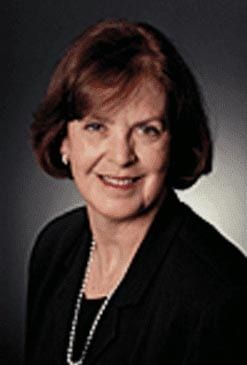When babies start exploring their surroundings, the world transforms into a playground of opportunities and risks. Babyproofing your home ensures your child can safely navigate this exciting phase. At Capital Women’s Care Rockville, Dr. Judith Gurdian offers guidance to help parents create a secure environment for their little ones.
Assessing Your Home for Potential Hazards
The first step in babyproofing is identifying risks within your home. Get on your hands and knees to see the world from your baby’s perspective. Look for sharp corners, loose objects, and easily reachable hazards. Areas like the kitchen, bathroom, and living room typically pose the greatest risks, but every room should be assessed.
Creating a Safe Nursery
Your baby’s nursery should be a haven of safety and comfort. Ensure the crib meets current safety standards with a firm mattress and fitted sheet. Avoid placing blankets, pillows, or stuffed toys inside the crib to reduce the risk of suffocation. Anchor heavy furniture like dressers and bookshelves to the wall to prevent tipping. Install cordless window coverings to eliminate strangulation hazards from cords.
Securing the Living Room
The living room is often the heart of family activities and requires careful babyproofing. Cover sharp corners on coffee tables and furniture with cushioned protectors. Secure TVs to the wall or stable furniture to prevent tipping. Use outlet covers to keep tiny fingers away from electrical sockets, and hide cords with cord concealers or clips.
Kitchen Safety Measures
The kitchen can be one of the most dangerous rooms for a curious baby. Use stove knob covers and turn pot handles inward while cooking to prevent burns. Install safety latches on lower cabinets and drawers, especially those containing cleaning products or sharp objects. Keep small appliances unplugged and out of reach when not in use.
Bathroom Precautions
Bathrooms contain many hazards that require extra attention. Use non-slip mats in the tub and on the floor to prevent falls. Install a toilet lid lock to keep babies from playing with or falling into the toilet. Store medications, cleaning supplies, and cosmetics in locked cabinets or high, inaccessible shelves. Adjust the water heater temperature to below 120°F to reduce the risk of scalding.
Essential Babyproofing Tools
While every home is unique, these tools are invaluable for creating a safe space:
- Outlet covers: Prevent electrical shocks.
- Cabinet locks: Secure harmful items out of reach.
- Corner cushions: Protect against sharp edges.
- Door knob covers: Restrict access to unsafe rooms.
- Baby gates: Block staircases or other hazardous areas.
- Furniture anchors: Prevent tipping accidents.
Managing Stairs and Hallways
Install sturdy baby gates at the top and bottom of staircases. Choose hardware-mounted gates for better security at the top of stairs. Hallways should be clear of clutter to prevent tripping hazards.
Outdoor Areas
If your home has outdoor access, ensure your yard or balcony is secure. Install childproof locks on sliding doors and place safety barriers around pools or hot tubs. Keep gardening tools, chemicals, and other hazardous items locked away.
Babyproofing isn’t a one-time task; it requires regular reassessment as your baby grows and gains new skills. What might be safe for a newborn could become a hazard for a crawling or walking baby. Staying proactive and vigilant helps maintain a secure environment.
Involving the Whole Family
Babyproofing is a family effort. Educate older siblings and caregivers about household safety rules. Encourage them to store small toys, coins, or other choking hazards in designated areas out of your baby’s reach. Open communication ensures everyone plays a role in keeping your home safe.
While safety is paramount, fostering your baby’s curiosity and development is equally important. Create a safe play zone with soft flooring and age-appropriate toys to encourage exploration. This approach allows your child to learn and grow in a controlled environment.
Professional Help and Resources
If you’re feeling overwhelmed, consult a babyproofing expert or your pediatrician for personalized advice. Dr. Judith Gurdian at Capital Women’s Care Rockville provides insights tailored to your family’s needs, ensuring your home is as safe as possible.
Babyproofing not only protects your child but also gives you peace of mind as a parent. Knowing your home is secure allows you to focus on enjoying the milestones and moments of early parenthood.
By addressing risks and fostering a safe environment, you’re setting the foundation for a happy and healthy childhood.
Sources:
Kendrick, D., & Barlow, J. (2007). Home Safety Education and Provision of Safety Equipment for Injury Prevention. Cochrane Database of Systematic Reviews.
MacKay, J. M., & Steel, J. (2010). Keeping Children Safe at Home. Injury Prevention.
Schwebel, D. C., & Gaines, J. (2007). Pediatric Injury Control: The Safety of Our Most Vulnerable Children. American Journal of Lifestyle Medicine.


